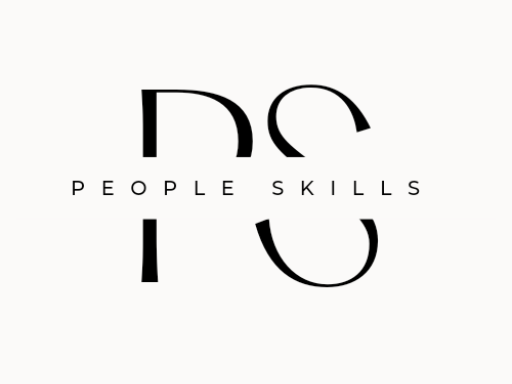Dealing with difficult people is just part of life – whether it’s a grumpy person on the subway, a coworker who is always upset, a boss who is not straightforward, or a team member who is not pulling their weight. We all run into these situations, but not everyone tackles them head-on. Let’s be real, not everyone knows how to handle it either. But here’s the thing: ignoring the problem is probably the worst way to go about it, for both you and the other person.

It’s one thing to let a weird encounter with a stranger slide during your commute, but it’s a whole different story when it comes to dealing with difficult people at work. If you’re a leader, it’s part of your job to step up and handle these issues. Sweeping them under the rug doesn’t just mess with your own success – it messes with the whole team’s vibe and productivity. In a work setting, being smart about how you deal with tough personalities is crucial for creating a positive work environment and keeping things running smoothly.
Take a moment to ask yourself, “Do I come across as a challenging person?” Provide an honest response and commit to making it a top priority to proactively shape your future actions. By conscientiously choosing your behavior, strive for a positive transformation. So, the next time you revisit the question, your answer confidently leans towards, “No, I am not.” This reflective journey can pave the way for personal development and more constructive interactions with those around you.
Several levels of categorizing difficult people
Different from you
Being different doesn’t inherently imply being negative. Whether someone is more or less attentive to details, works at a different pace than you, or expresses emotions differently or has exactly the opposite opinion, it’s merely a distinction. Embrace the idea that diversity adds flavor to life and adopt a “live and let live” mindset. Discover ways to leverage these differences, tapping into the unique characteristics the other person brings to the table. This approach is especially beneficial when overseeing a team, fostering a healthy and supportive environment.
Incompetent
An individual lacking competence isn’t necessarily negative; they might simply not be the right fit for the role. There could be performance issues as well, and as a leader, it falls on you to identify and address these challenges. Handling such situations is a crucial aspect, and this is the main focus of the current article.
Toxic
Identifying a toxic individual is straightforward; you can definitively label them as “actively bad.” Recognizing this type is not difficult:
- They often have issues with others.
- They display selfish tendencies and a lack of interest in others.
- They are high-maintenance, consuming time and often creating drama.
- They consistently play the victim, avoiding admission of wrongdoing and maintaining a belief that life is unfair against them.
When you identify such a person in your team, it’s crucial to take swift action and consider removing them from your team and/or company.
Keep in mind that opting not to take action is still a decision, and it’s the least favorable choice a leader can make. By abstaining from making a decision, you effectively delegate that power to someone else. Failing to address challenges posed by a difficult employee can have adverse effects on the entire team, and it may also cast a negative light on your managerial performance. After all, who would endorse a manager incapable of fostering a positive work environment and tolerating incompetence?
Dealing with difficult employees has upsides too
Though facing someone directly may feel challenging and may not align with your natural inclination, addressing the situation can significantly enhance overall team performance. Your actions serve as a powerful signal to the entire team, establishing clear expectations for positive behavior and demonstrating an uncompromising commitment to the team’s overall effectiveness. Additionally, it can serve as motivation for other team members, reinforcing the understanding that the group’s standards will consistently be upheld at a high-performing and professional level.
Let’s explore how difficult people impact their teams
Showing poor performance
Displaying poor performance is a commonly recognized issue among challenging individuals. When a team member falls short of expectations, it adversely affects the entire team in several ways:
- The employee may feel excluded and undervalued as a contributing member.
- Other team members are burdened with extra tasks, leading to overtime and increased stress. Moreover, accepting poor performance from some individuals creates the wrong impression in the team that inadequate performance is sufficient and degrades the overall team output.
- Managers are compelled to invest additional effort in managing the heightened workload, conducting extra checks, and potentially taking responsibility for incomplete tasks. This, in turn, elevates stress levels, promotes more aggressive communication, and raises expectations from the rest of the team.
Do you notice how this forms an endless cycle, perpetuating issues that grow like a snowball? It is in nobody’s best interest to have a low-performing team member, as the team’s overall performance is only as strong as its weakest link.
Uncooperative with other members
At the core of any successful team lies open and transparent communication. When a team member struggles to connect with others, it inevitably takes a toll on peer relationships.
You can discern this by gauging the atmosphere in the office. Observe how people interact, whether your presumed challenging employee is present or not. Over time, you’ll notice a gradual decline in communication, turning team lunches from a well-deserved break into a challenging ordeal.
And just like that, nobody emerges victorious.
Unable to receive feedback
The exchange of feedback, both giving and receiving, stands as a key catalyst for a company’s progress. We advance and adapt through continuous and constructive feedback loops. However, when this cycle is disrupted, we find ourselves at a standstill, and developmental growth comes to a halt.
If an employee declines to accept and act on feedback, it hampers their ability to perform optimally, subsequently impacting the overall team performance.
Unable to accept change
In today’s rapidly changing business landscape, the ability to embrace change and swiftly adjust to new circumstances is absolutely essential.
Consider the impact of the pandemic: almost overnight, people were required to shift to remote work. It was a period marked by uncertainty and unforeseen challenges. Those who adapted quickly not only survived but thrived during this time.
Transitioning to remote work posed its own set of challenges – makeshift home offices, the background noise of children, the shift from analog to digital, virtual meetings on platforms like Teams, and even virtual coffee breaks. However, those who adapted swiftly recognized the opportunity to relocate from urban to rural settings. This allowed them to work amidst the tranquility of the countryside while providing a free space for their children to explore. These individuals are now richer with diverse experiences and more adaptable to whatever challenges lie ahead.
These are the kind of individuals you want in your team; they are the ones that set you apart from the rest.
Tips for dealing with difficult employees
As it’s not possible to compel someone to change, the available tools in your toolkit include coaching and providing constructive feedback.
For further insights on coaching questions, delve into the complete article: “Coaching Questions: The Key to Effective Leadership in the Modern Workplace“.
- Upon identifying a challenging team member, it’s crucial to act promptly and decisively. Incompetence should not be tolerated. Depending on your location, there might be a probationary period for new hires; if performance falls short within that timeframe, reconsider the hiring decision. It’s not beneficial for you, the existing team, or the individual in question.
- When addressing the issue with the employee, maintain openness and brevity. Allow them the opportunity to express themselves. This approach is key to understanding their perspective on the current situation.
- Remember, we are all human. Exhibit empathy and genuine interest in their concerns, placing yourself in their shoes to better assess the present circumstances.
- Opt for non-violent communication. Further insights on this topic can be found in the article “Managing Organizational Stress“.
- Prepare your speech in advance. Avoid being caught off guard and ensure you have the right words ready for the discussion.
What if nothing works?
If, despite your best efforts to address underlying issues, performance hasn’t improved, it becomes necessary to seek guidance from your immediate supervisor and/or local HR. Understand your available legal options to resolve the problem.
Before escalating to your supervisor, ensure you’ve exhaustively tried to resolve the issues fairly and amicably. Additionally, maintain a detailed record of discussions and feedback provided. Be prepared to support your side of the story with appropriate documentation.
